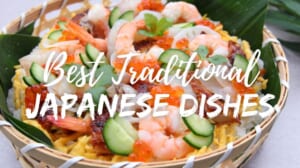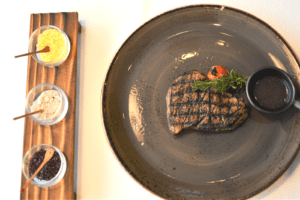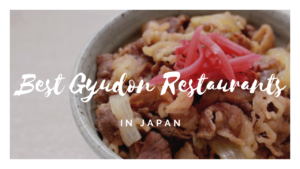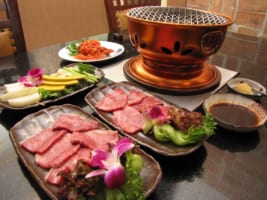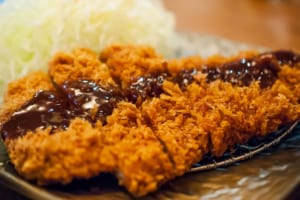Sukiyaki vs Shabu Shabu: What is the Difference
Sukiyaki and Shabu Shabu, similar yet different
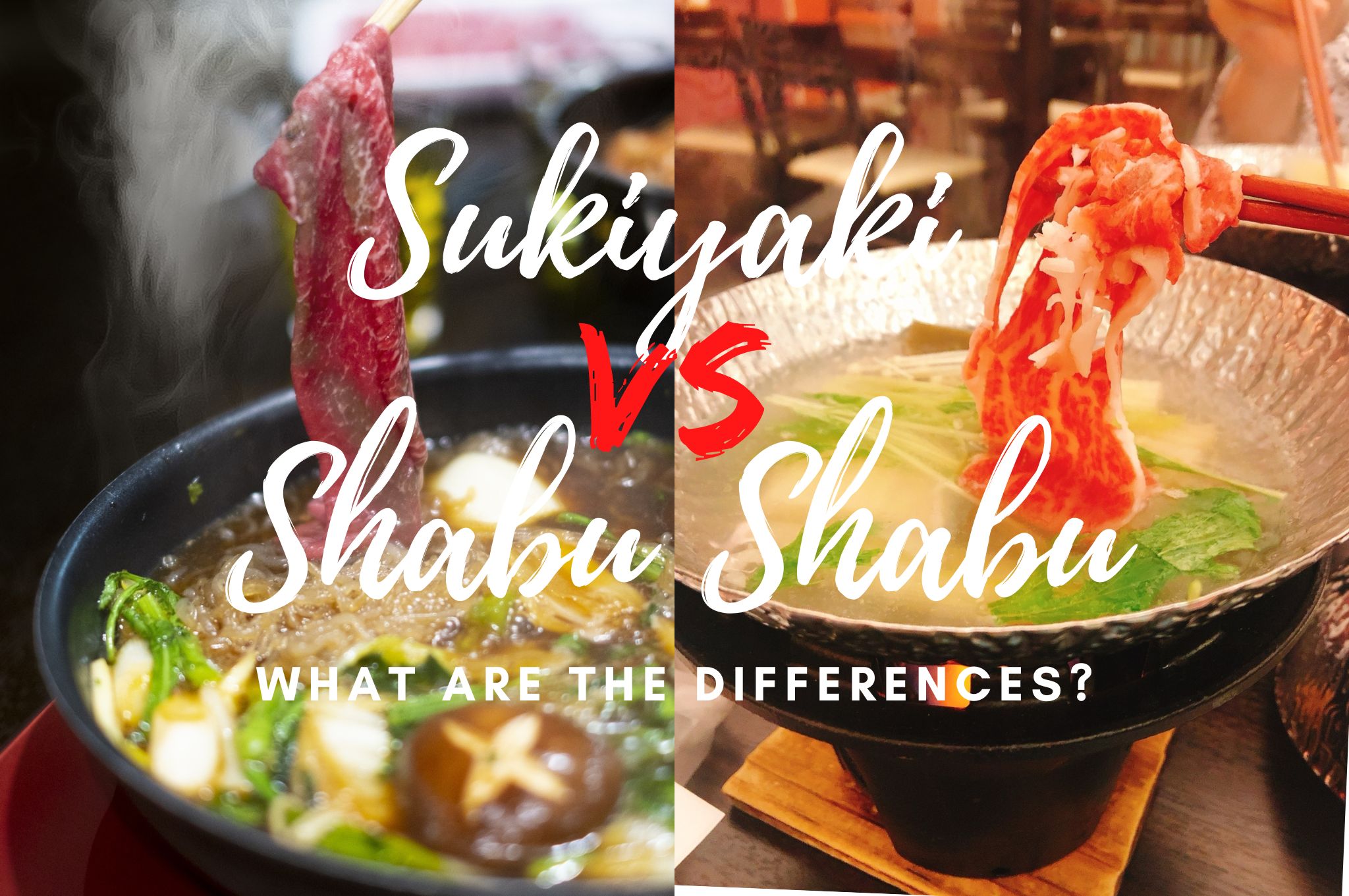
Outside of sushi and ramen, sukiyaki and shabu shabu are probably among the best-known Japanese dishes outside of Japan. They’re often compared because of their similarities. Both have sort of a basis in hot pot cuisine. Both involve delicious thin slices of top-quality marbled Japanese beef (layered with fat which quickly dissolves and gives an extra rich texture) and both are hearty meals that will warm you up quickly during the colder months. But that’s where the similarities end.
So what are the main differences? Both came to be within different contexts, have different preparation techniques, and have very distinct flavors, so if you haven’t tried them yet, here I’ll go over what each dish consists of and their differences:
Each Dish Has a Different History
Sukiyaki Is Linked to the Introduction of Meat Culture in Japan
 The name itself reveals an important distinction in each case. Sukiyaki (鋤焼き) is a dish that has been around since the Meiji era (1868-1912), and its kanji composition may seem a bit confusing when looking at each meaning without further context. Suki (鋤) is a plowing spade/shovel, which also doubled as a surface to grill tofu or fish during the Edo period (1603-1867). Yaki (焼き) generally refers to something baked, roasted, or grilled.
The name itself reveals an important distinction in each case. Sukiyaki (鋤焼き) is a dish that has been around since the Meiji era (1868-1912), and its kanji composition may seem a bit confusing when looking at each meaning without further context. Suki (鋤) is a plowing spade/shovel, which also doubled as a surface to grill tofu or fish during the Edo period (1603-1867). Yaki (焼き) generally refers to something baked, roasted, or grilled.
Together, the name gives us an idea of what was the meat’s cooking method. Then, as foreign diplomats, merchants, and travelers started to increase at the end of the Edo period, the culture of eating meat slowly started to grow in Japan (until then, cattle was used for labor, so eating beef was originally forbidden) and the name of sukiyaki eventually stuck, as it involved stewing the meat in a flat or shallow iron pan.
Shabu Shabu, a Postwar Discovery Inspired by Chinese Cuisine
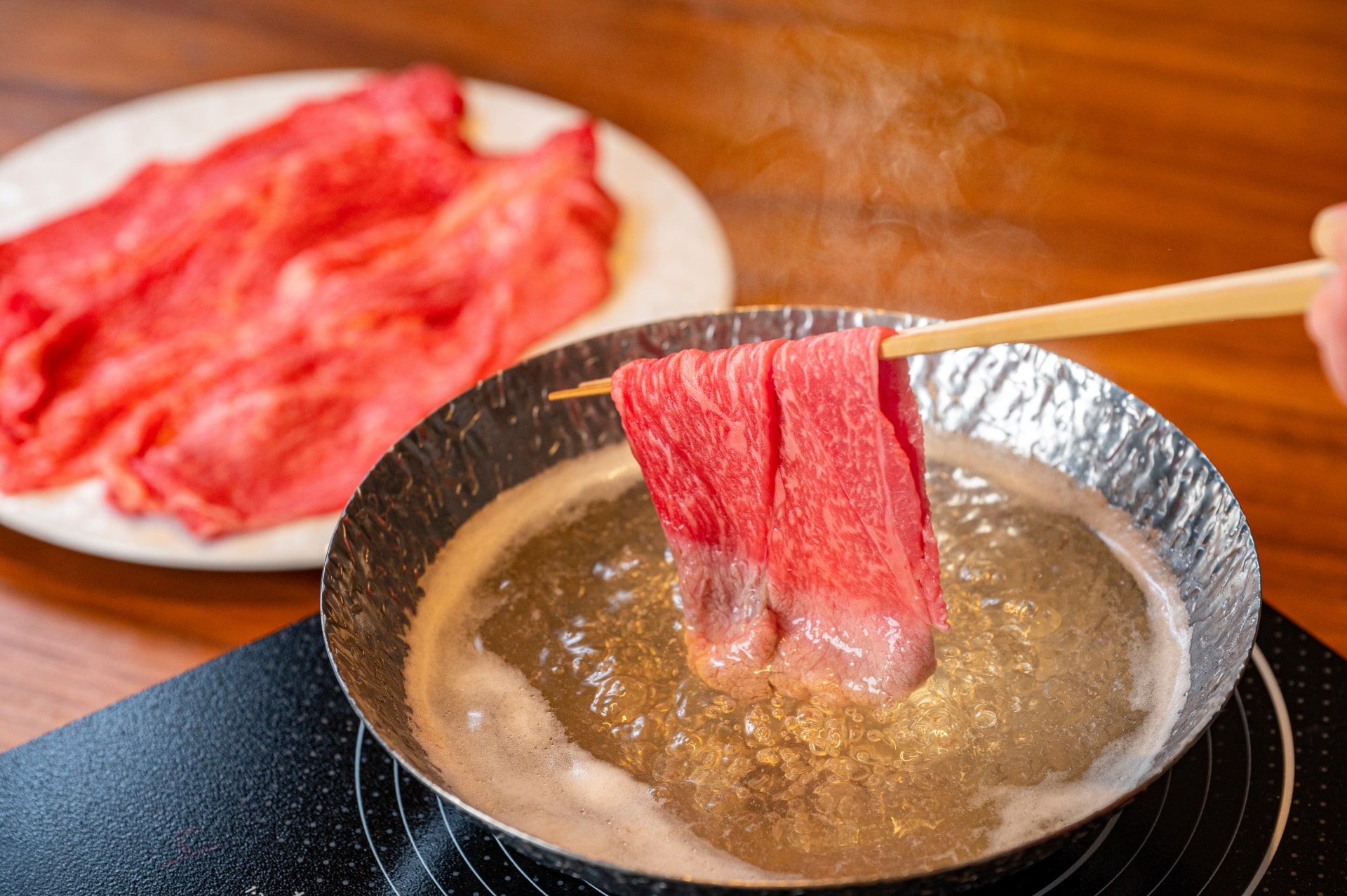 Shabu shabu (しゃぶしゃぶ) is a pretty recent addition to Japanese cuisine’s extensive catalog. Its origins are traced to China, as the main inspiration for shabu shabu was a very similar hot-pot mutton dish, that was popular in Beijing and was called shuwan yanlow. Its introduction to Japan is commonly attributed to Yoshida Shoya, a Japanese doctor who ended up drafted as a military doctor in China in 1938.
Shabu shabu (しゃぶしゃぶ) is a pretty recent addition to Japanese cuisine’s extensive catalog. Its origins are traced to China, as the main inspiration for shabu shabu was a very similar hot-pot mutton dish, that was popular in Beijing and was called shuwan yanlow. Its introduction to Japan is commonly attributed to Yoshida Shoya, a Japanese doctor who ended up drafted as a military doctor in China in 1938.
When he returned to Japan in 1945 after the war, he showed the recipe to a chef in Kyoto, who adapted the seasonings to the Japanese taste and replaced the mutton with beef. Amid growing popularity, an establishment in Osaka coined the shabu shabu term in 1952, which was simply an onomatopeia, often translated as “swish swish”, depicting the quick sweeping motion of dipping the raw meat slices in simmering broth. Although it’s generally prepared with beef, pork is also a common variant.
Meat Slices Vary in Thickness
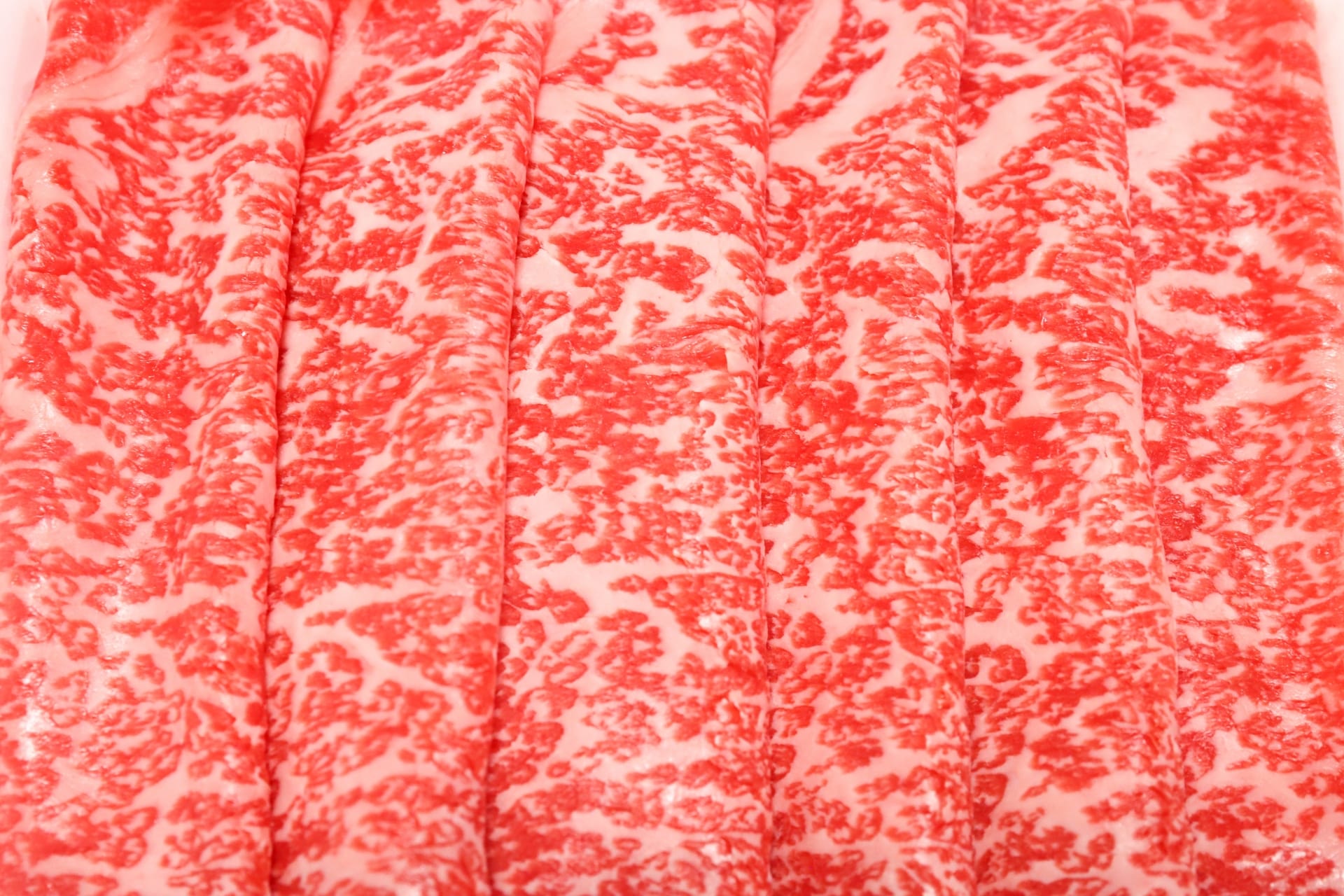 Although the meat is usually the same, sukiyaki meat slices are slightly thicker (between 1.8 and 2.5 mm), because they’re stewed for longer, whereas shabu shabu slices tend to be thinner (between 1.5 to 2.0 mm) because they’re meant to be dipped very quickly before being eaten.
Although the meat is usually the same, sukiyaki meat slices are slightly thicker (between 1.8 and 2.5 mm), because they’re stewed for longer, whereas shabu shabu slices tend to be thinner (between 1.5 to 2.0 mm) because they’re meant to be dipped very quickly before being eaten.
Different Ingredients With Distinct Flavors
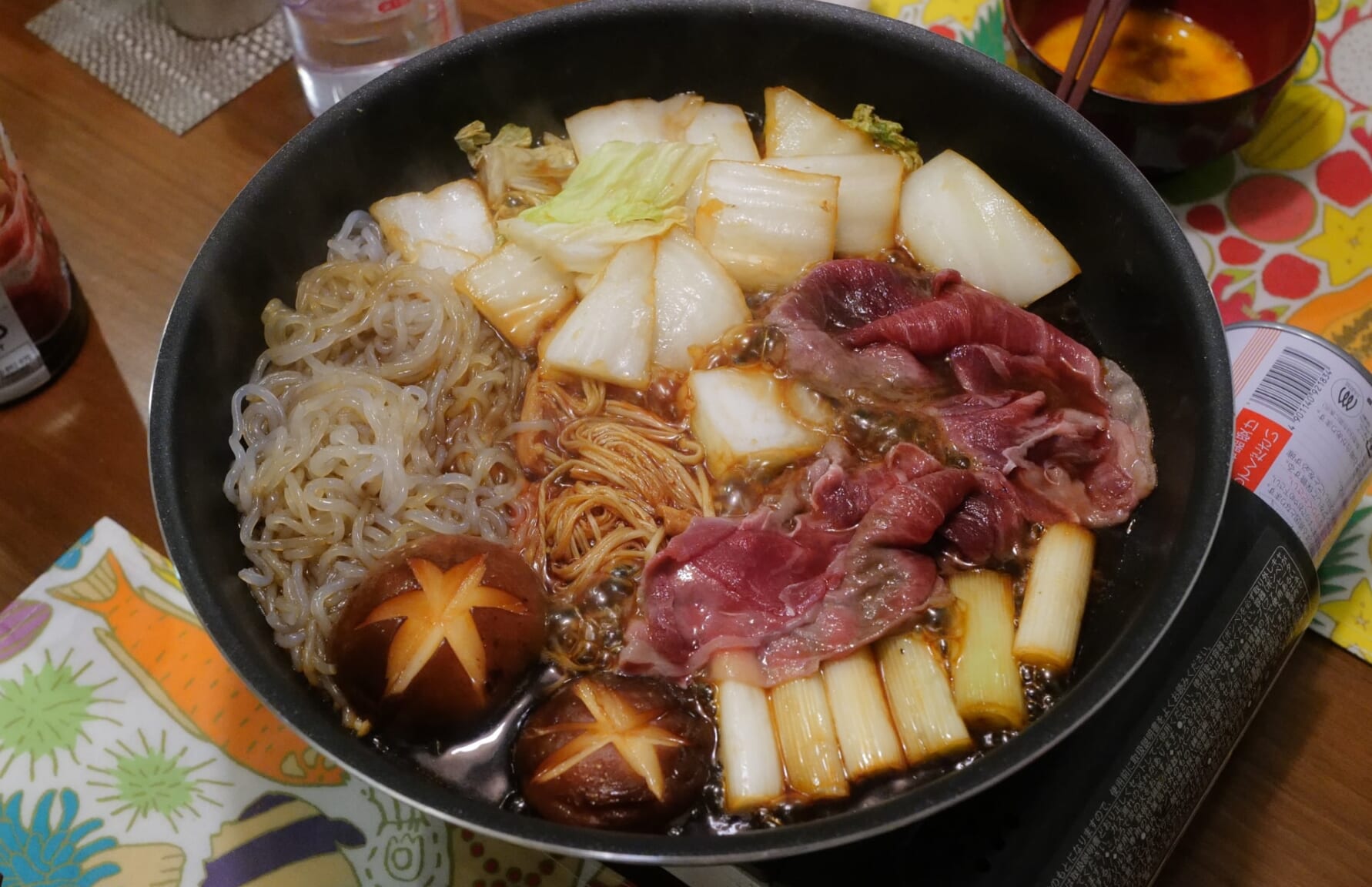
The most typical ingredients involved in sukiyaki, besides the meat, are tofu, Chinese cabbage, green onions, shiitake, and/or enoki mushrooms and udon or shirataki noodles. All the vegetables are stewed together in a thick boiling sauce made of soy sauce, sake, mirin, and sugar, resulting in a very characteristic sweet and sour flavor. After the meat is stewed for a few seconds, it’s dipped in beaten raw egg which also helps to cool off the meat before eating it.
As for shabu shabu, the meat is slightly dipped in a light dashi stock usually made of boiling kombu seaweed, and then dipped in either ponzu sauce (a sort of vinaigrette made of a mix of several types of citrus juice with soy sauce, sugar, mirin, and dashi) or a thick sesame sauce. It’s usually accompanied by a variety of vegetables such as onions, carrots, and cabbage, with shiitake mushrooms and tofu. Some places also serve a bowl of white rice.
Seasonal Differences And Ways to Eat Them
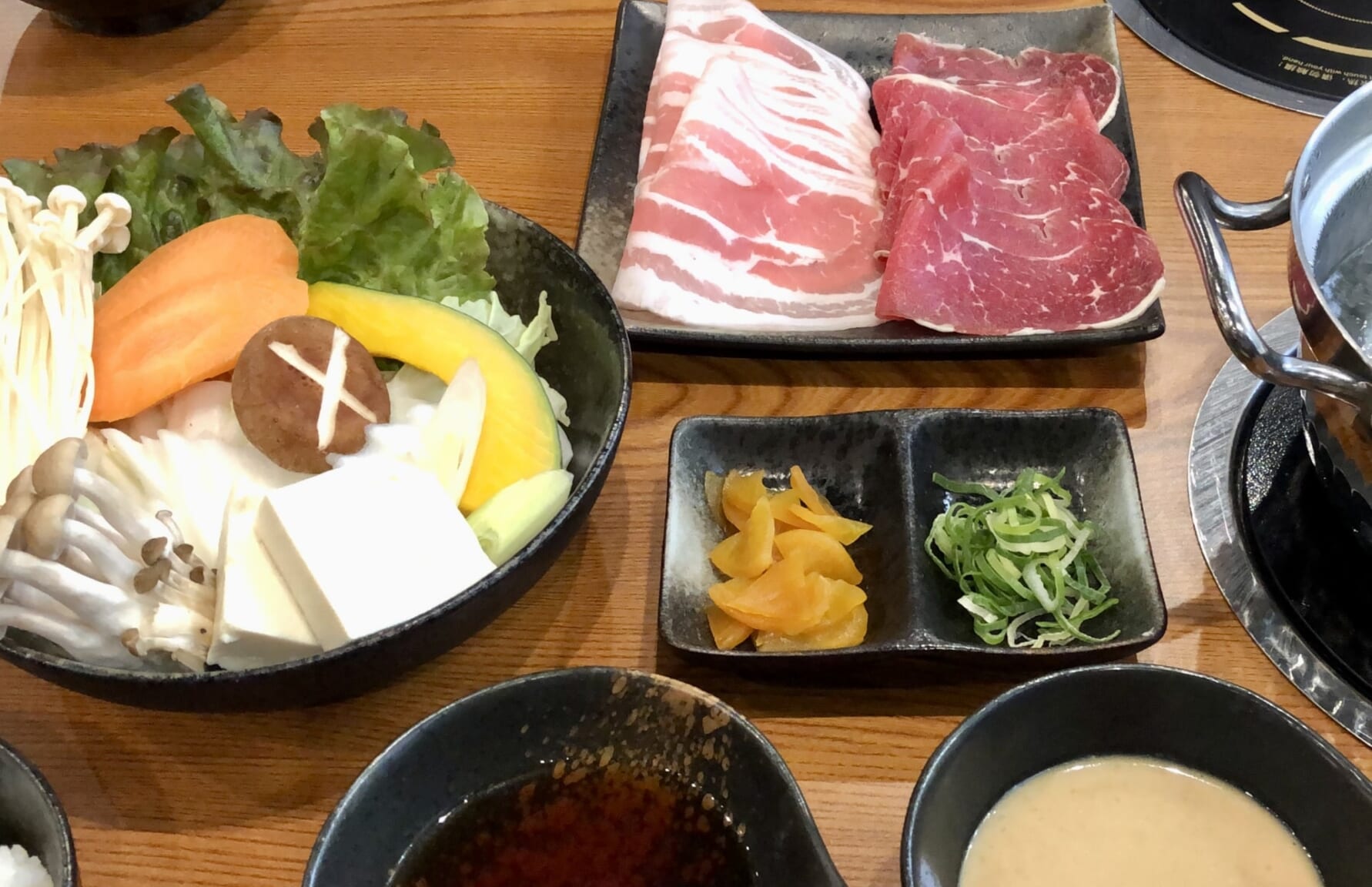
Specialty restaurants serve both sukiyaki and shabu shabu year-round so availability is not really a concern. But traditionally, shabu shabu is a hot pot dish that is eaten anytime while sukiyaki is always more closely associated with winter.
In both cases, a small stove (usually a gas one but it could be electric) is kept on the table to maintain the temperature of the pot or the pan. Unlike other traditional hot pot dishes where everything is cooked before serving, sukiyaki and shabu shabu require all the raw ingredients on the table so we can cook as we eat, adding an element of entertainment to the meal.
Once the sauce (sukiyaki) or the broth (shabu shabu) is brought to a boil, we can start adding the vegetables to our liking, improving the respective taste of each base, before we begin cooking the meat as explained above depending on each case. After we’re done with the meat, we add the noodles (sukiyaki) or the rice (shabu shabu) to the remaining sauce/broth and so we finish the meal.
▽Here is the complete guide to learning the Best Traditional Japanese Dishes!▽
If you asked me which one is my favorite, that would be very difficult to answer. Both are some of the things I love eating during winter the most, so unless you’re visiting during the worst of the summer heat, I wholeheartedly recommend trying them both during your next trip to Japan!
▽Subscribe to our free news magazine!▽
For more information about delicious Japanese food, check out the following links!
▽Related Articles▽
▼Editor’s Picks▼
Written by
Photographer, journalist, and avid urban cyclist, making sense of Japan since 2017. I was born in Caracas and lived for 14 years in Barcelona before moving to Tokyo. Currently working towards my goal of visiting every prefecture in Japan, I hope to share with readers the everlasting joy of discovery and the neverending urge to keep exploring.





